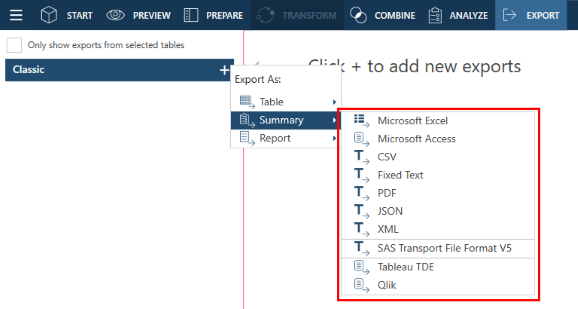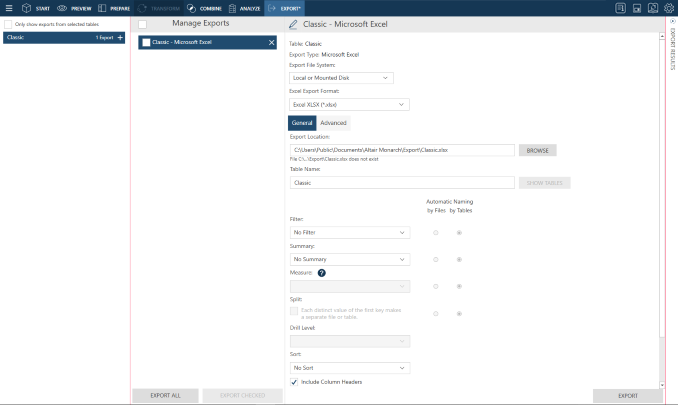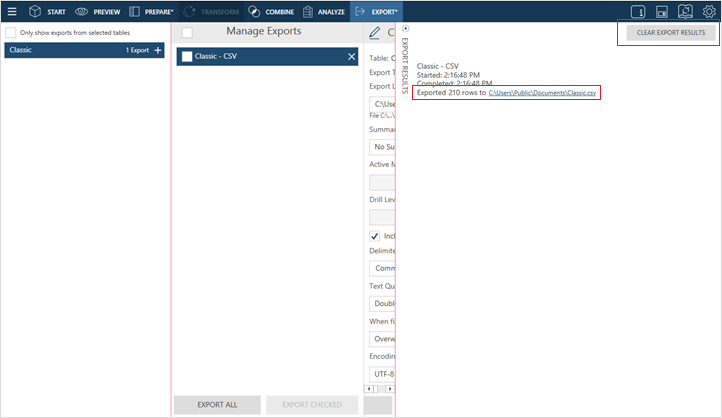Exporting Summaries in Data Prep Studio
You can export a summary to various file formats in Data Prep Studio. The steps in setting up a summary export are detailed below.
Setting up a summary export
-
Click the Export tab to display the Export window.
-
Click on the
 Add Export button located to the right of the table from which you created a summary, select Summary, and from the options that display, select an export format.
Add Export button located to the right of the table from which you created a summary, select Summary, and from the options that display, select an export format.
You can export summary tables to the following formats:
-
Microsoft Excel
-
Microsoft Access
-
CSV
-
Fixed Text
-
PDF
-
JSON
-
XML
-
SAS Transport File Format V5
-
SAS Transport File Format V8
-
Tableau Hyper
-
Qlik
NOTE:
-
Data exported in Data Prep Studio to Excel files are exported as named ranges. Thus, when the table is opened, the worksheet name displayed corresponds to that of the named range.
-
The table you selected displays in the Manage Exports panel and its properties display in the Export Properties panel.

-
Rename the export if you wish by clicking on the Edit
 button located to the left of the Export name and then entering a new name into the field. Click the Accept
button located to the left of the Export name and then entering a new name into the field. Click the Accept  or Cancel
or Cancel  icons to accept or reject your specified changes, respectively.
icons to accept or reject your specified changes, respectively. -
Specify general export options as necessary. Your export options will vary depending on the export type. Select an export type below to view its corresponding export options:
-
Click the Export button located at the bottom right of the window to execute the export operation.
When the export operation is completed, the Export Results panel displays.

-
If the export was completed successfully, an export link will appear. Clicking on this link launches the folder to which you saved the exported summary.
-
You can erase all export results from this panel by clicking on the Clear Export Results button located at the top right-hand corner of the panel.
-
If you have several exports configured and an export validation occurs, for example, the file extension for a specific export does not match the allowed extensions for a certain export type or the file name is too long, the Export All button is disabled and the problematic export is identified by a red border in the Manage Exports panel. The issues related to this export must be resolved before all exports can be executed.
© 2025 Altair Engineering Inc. All Rights Reserved.